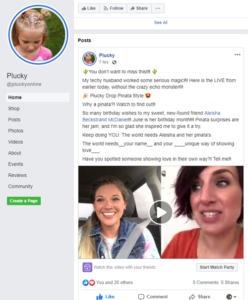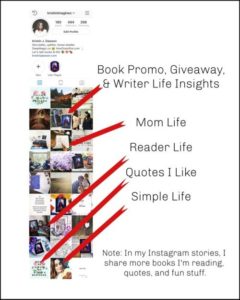1000 N. West Street #1200, Wilmington, DE 19801
© 2024 Direct Learning Systems, Inc. All rights reserved.

This is the second article in a four-part series on author platform. If you’re looking to build or strengthen a platform, you’ve come to the right place!
1: Defining Your Author Brand – Part 1
2: Defining Your Author Brand – Part 2 (This article)
3: Finding Your Target Market
4: Building Author Brand Engagement: It’s Not About the Numbers
This is Deciding Your Author Brand – Part 2. If you haven’t seen part 1, make sure to read it. Now let’s dive in!
Per the last article, you’ve brainstormed your list of things you believe in, your passions, and your core values. And you’ve considered your writing, your audience, and also evaluated possible overlapping elements. You do not have to select something that is actually in your writing, however. For example, Charlie N. Holmberg’s mission is to raise awareness of female body positivity/acceptance, but this is not an overt part of her novels.
Now that we’ve reviewed Step 1 from the last article, let’s move on to the remaining steps and find your core mission statement.
Every person has layers of depth, varying moods, and opinions that change as we learn. However, for your brand, you’ll want to have some consistency.
It’s often difficult to whittle down the values you want to reflect in your personal branding. But while you have a lot of depth as a person, be laser-focused for your audience. When people see your brand, you want them to immediately associate you with it. For example: “strong willed,” “pro self-worth,” “witty,” “advocate for ‘x’ ,” “rainforest protector,” or some other essence of who you are that will evoke emotion and tell your story.
At this point, hone in on your favorite ideas––around one to three––that resonate.
Note: Why does this matter? Your rallying cry eventually helps define who your audience is, and gives you tools to reach out and strengthen your relationship. Your choice will be used again and again later as we go through the rest of this platform series.
Create sample content reflecting your brand value. For example, if you’re brand is kindness, like Plucky, a new clothing retailer, or Mama Leisha, the established motivational speaker, do things like:
– Serve others with compassion.
– Post kindness quotes.
– Respond with kind comments.
Your brand is kind. Kind. Kind. Also consider your colors, fonts, even business cards . . . ideally these things will reinforce your brand.
When I went to pull the above two entities as examples, I was happy to see these two kindness-focused companies actually joined forces for a campaign! Partnership! (That’s a conversation for a future article.) They are across the country from each other, but they’re doing this Facebook Live together; there’s a cactus piñata, unseasonal rain, a garbage bag, and a pink string involved. It all serves to market the brands and reflect their values.


Note: If you’re having trouble coming up with content ideas that reflect your brand values, then they may not be resonating with you, or they may just not be a great fit for sharing with your audience. Consider crossing it off the list.
Steps 3a and 3b should be considered in the same breath. Consider both these elements before finalizing your decision(s). Look at your narrowed down choices, along with your particular voice and skills. Is it original?
This is overwhelming if you think that you’re tasked to find an idea that is completely unique. Very unlikely! Even the two examples I used above, Mama Leisha and Plucky both have a “kindness” platform. Yet they both have distinctive voices and have different goals. Everyone is born unique, even your fingerprint is special. So, here’s a litmus test to consider––if you find your voice is lost in the cacophony rather than helping build up an idea/community you believe in, think about crossing that element off your list.
Look at your strongest contenders and see if they check off the following boxes:
– You’re passionate about it.
– It overlaps or is reflected in your writing.
– It’s authentic to you.
– You can create content to support it.
– It stands out as original in your space.
If you have one thing that is hitting all these areas and you’re super excited about it, that’s fantastic! If your mission is weak in one or even two areas, but you feel passionate about having this as your author brand, then go for it. If your brand idea is falling short, start over with your list of passions and core values, dig deeper, and go through this process again.
Whatever you select, test it. Analyze your posts to see what is getting the best engagement. One of the best things about social media is the impermanence. You can test things out and see what your fans are responding to . . . and what they’re ignoring.
Often writers will have other things about themselves for readers to know. These things don’t necessarily have anything to do with your author writing.
Example: Emily R. King, a bestselling author, loves sharks. She grew up near the ocean and it is dear to her heart. She doesn’t write about sharks, but she is passionate about them. This is a brilliant parallel brand because it shows a different side of her, it’s authentic, and, as a bonus, sharks are fierce creatures. Emily’s core branding is sisterhood female empowerment–and sharks subtly support this messaging. (Though I don’t think that was her intention. She really likes sharks!)
Tip: Be like Emily. So as not to confuse any aesthetic on Instagram, you can share a supportive brand idea on your stories. Charlie N. Holmberg also does this for her posts about female body acceptance/positivity. Be like Charlie, too.

I generally tell people to have three things they share about themselves online. Again, most people have lots of things they’re interested in, or are actively doing in their lives, but streamline it. In my Instagram account, I do book promotion, but I also share other things about myself:
– reader
– mother
– simple country life
– inspirational quotes (which are part of my core branding)
EVERY post can fit into these categories (usually more than one).


What if you already have social media and it’s all over the place? You’ll need to evaluate what stays and delete the photos that stray off brand. Consider this for everywhere you interface with the public, including your website, articles, etc.
Example: At a conference, I stayed up late chatting with an author friend. She spends the bulk of her day editing. She’s a six-figure author and doesn’t have much patience for social media. After identifying the highest engaging posts and discussing her goals/values, we made changes. She wasn’t comfortable sharing photos of her kids. And her highest engaging posts were about her hair! She is obsessed with changing her hair color and style, and her fans responded to those fun posts. So she deleted the pics of her family and everything else, except for hairstyles, cooking, and books. Now she can be authentic and comfortable, and her audience gets the “behind the scenes” they want, too.
Now that you have your core author branding and your supportive branding figured out, it’s time to move onto reaching your target market in the next article.
Kristin J. Dawson lives on the edge of a forest in the Pacific Northwest. She’s the author of THE LILAC PLAGUE, the HowDoesShe.com Literary Contributor, and a Deep Magic E-zine Board Member.
1000 N. West Street #1200, Wilmington, DE 19801
© 2024 Direct Learning Systems, Inc. All rights reserved.
1000 N. West Street #1200, Wilmington, DE 19801
© 2024 Direct Learning Systems, Inc. All rights reserved.
1000 N. West Street #1200, Wilmington, DE 19801
© 2024 Direct Learning Systems, Inc. All rights reserved.
1000 N. West Street #1200, Wilmington, DE 19801
© 2024 Direct Learning Systems, Inc. All rights reserved.

1000 N. West Street #1200, Wilmington, DE 19801
© 2025 Direct Learning Systems, Inc. All rights reserved.

1000 N. West Street #1200, Wilmington, DE 19801
©2025 Direct Learning Systems, Inc. All rights reserved. Privacy Policy.
4 Comments